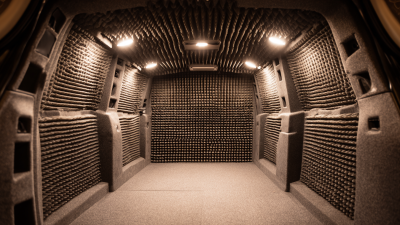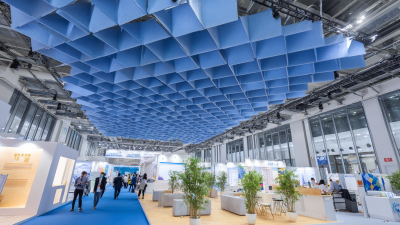Essential Guide to Welding Screens: Enhancing Safety and Efficiency in Your Workshop
In any workshop where welding takes place, safety and efficiency are paramount. One of the most effective ways to enhance both is by utilizing welding screens. These essential barriers not only protect workers from harmful sparks, spatter, and radiation generated during the welding process, but they also help maintain a clear and organized workspace.

This guide will explore the importance of welding screens, highlighting various types, their benefits, and tips for selecting the right screens for your specific welding environment. By understanding the vital role of welding screens, you can significantly improve safety measures while optimizing the overall productivity of your workshop. Whether you're an experienced welder or just starting out, these insights will empower you to create a safer and more efficient working atmosphere.
Choosing the Right Welding Screen Material for Your Workshop Needs
When selecting the right welding screen material for your workshop, it is crucial to consider both safety and functionality. PVC screens are a popular choice for many environments due to their excellent visibility and resistance to sparks and spatter. They provide sufficient protection against ultraviolet (UV) rays while allowing for a clear line of sight, making them ideal for areas where visibility is essential.
Moreover, PVC is lightweight and easy to handle, ensuring that you can quickly deploy or reposition screens as needed.
Another material worth considering is fiberglass, which is known for its durability and resistance to high temperatures. This type of screen not only protects against sparks but also provides a barrier to harmful fumes and dust. It is an excellent option for industrial workshops where heavy-duty protection is required.
Additionally, fiberglass screens can be treated to enhance their fire resistance, offering an extra layer of safety. By assessing the specific needs of your workshop environment, you can choose the most effective welding screen material to improve safety and efficiency in your workspace.
Understanding the Different Types of Welding Screens Available
Welding screens are critical in ensuring safety and efficiency in any workshop environment. They serve as protective barriers against harmful ultraviolet (UV) and infrared (IR) radiation produced during welding processes. Understanding the different types of welding screens available can help you select the right one for your needs. Traditional vinyl screens are common due to their affordability and decent protective qualities, but they may not provide the highest level of visibility.
For a more durable option, there are mesh screens designed to withstand higher temperatures and resist tearing. These screens are ideal for workshops with intense welding activity and can even mitigate sparks. Additionally, portable welding screens offer flexibility and ease of movement, allowing you to quickly set up barriers as required. They often come equipped with wheels, making them perfect for larger workspaces where the layout may frequently change. Each type of welding screen has its advantages, making it essential to assess your workshop's specific requirements before making a choice.
Proper Installation Techniques for Maximum Safety and Efficiency
Proper installation techniques are critical for ensuring maximum safety and efficiency when using welding screens in any workshop. First and foremost, selecting the right location for your welding screen is essential. Ideally, screens should be positioned to create a barrier between the welder and other personnel while allowing ample light for visibility. When mounting the screens, ensure they are secured firmly and, if possible, use adjustable mounts that allow for easy repositioning as work dynamics change.
Additionally, the height and orientation of the welding screens play a significant role in their effectiveness. Screens should be high enough to protect bystanders from radiant heat and sparks but low enough to maintain a clear line of sight for the welder. The proper angle can also help direct sparks away from sensitive areas in the workshop. Regular inspections and maintenance of the screens to check for wear and tear will further enhance safety, ensuring that they remain a reliable form of protection in high-risk environments.
Maintaining and Cleaning Your Welding Screens for Longevity
 Proper maintenance and cleaning of welding screens are crucial for ensuring their longevity and effectiveness in your workshop. Over time, welding screens can accumulate dust, spatter, and grime, which not only diminishes visibility but also poses safety risks. Regularly inspecting the screens for any damages or wear is essential; small tears can grow larger if left unaddressed, compromising protection. Therefore, implementing a routine maintenance schedule will help keep your screens in optimal condition.
Proper maintenance and cleaning of welding screens are crucial for ensuring their longevity and effectiveness in your workshop. Over time, welding screens can accumulate dust, spatter, and grime, which not only diminishes visibility but also poses safety risks. Regularly inspecting the screens for any damages or wear is essential; small tears can grow larger if left unaddressed, compromising protection. Therefore, implementing a routine maintenance schedule will help keep your screens in optimal condition.
When it comes to cleaning, it is vital to use the right materials to avoid damaging the screens. Mild detergents mixed with water are typically sufficient for cleaning most surfaces without causing harm. Gently scrub the screens using a soft cloth or a sponge to remove residue effectively. For challenging stains, a dedicated cleaning solution may be required, but always check the manufacturer’s recommendations beforehand. After cleaning, ensure that the screens are thoroughly dried to prevent moisture buildup, which can lead to premature deterioration.
By maintaining and cleaning your welding screens regularly, you enhance their performance and extend their useful life, contributing to a safer workshop environment.
Best Practices for Positioning Welding Screens to Minimize Hazards
When positioning welding screens in a workshop, safety and efficiency should be the top priorities. First and foremost, screens must be placed strategically to offer maximum protection from harmful sparks and intense light. Ideally, they should be set up to create a barrier between the welder and any potential bystanders, helping to eliminate the risk of flash burns and flying debris. Ensure that the screens are anchored securely to prevent them from being knocked over, particularly in busy work environments.
Additionally, consider the workflow within the workshop when arranging the screens. It's essential to position them in a way that allows for easy movement of materials and equipment while still providing adequate visibility and protection. The screens should not obstruct essential pathways but rather guide individuals away from hazardous zones. By adopting these best practices, workshops can maintain a safe atmosphere while enhancing productivity, allowing welders to perform their tasks efficiently without compromising safety standards.

Related Posts
-

How to Choose the Right Sound Deadening Material for Your Project
-

Transform Your Space with Stylish Sound Absorbing Panels: A Comprehensive Guide
-

Exploring Market Trends: Sound Absorbing Panels at the 138th Canton Fair 2025 with Key Industry Insights
-

Industrial Curtains Market Growth Projections at China Import and Export Fair 2025 138th Session
-

Exploring the Impact of Sound Absorbing Panels at the 138th Canton Fair 2025: Industry Insights and Trends
-

What is Sound Dampening Curtains and How They Reduce Noise Levels by up to 70 Percent